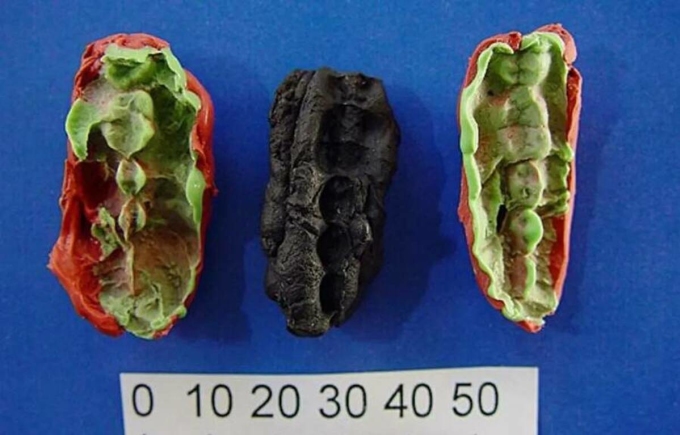Swedish DNA from 'chewing gum' used 10,000 years ago reveals diet and dental health of human ancestors.
The study was published in the journal Scientific Reports on January 23. The gum, a black, tar-like resin made from birch bark, contained clear saliva and tooth marks. Archaeologists discovered it 30 years ago, alongside skeletons at the 9,700-year-old Huseby Klev archaeological site, north of Gothenburg, Sweden.
According to Anders Gotherstrom, study co-author and scientist at Stockholm University, hunter-gatherers may have chewed the plant’s sap to make glue, assemble tools and weapons. Another theory is that they used the gum for medicinal purposes.
"Some gum brands are used by both men and women, mostly teenagers," Gotherstrom said.
Previously, in 2019, researchers mapped the genetic material from chewing gum samples. This time, Gotherstrom and his paleontology team once again identified DNA found in the gum. From there, they showed that the teenagers ate deer meat, lake fish, and hazelnuts before putting the gum in their mouths and chewing.
Scientists have discovered at least one prehistoric teenager with serious dental health problems. In a sample of chewing gum, they found bacteria that cause periodontitis, a gum infection.
"The Stone Age girl started losing her teeth right after chewing this gum, it must have been very painful," Gotherstrom said.

10,000-year-old chewing gum samples discovered in Sweden. Photo: ATI
Identifying different species from DNA is challenging, according to Dr. Andrés Aravena, a scientist at Istanbul University.
“We had to apply some computationally intensive analysis tools to distinguish between different species. All of our tools were not ready to be applied to ancient DNA. But most of the time, we had to adapt them,” he said.
In 2019, scientists reconstructed the woman's image based on DNA extracted from a 5,700-year-old chewing gum. The girl had dark skin, brown hair and blue eyes and came from Syltholm, a Danish island in the Baltic Sea. The researchers nicknamed the woman "Lola."
Thuc Linh (According to CBS News )
Source link



































































































Comment (0)